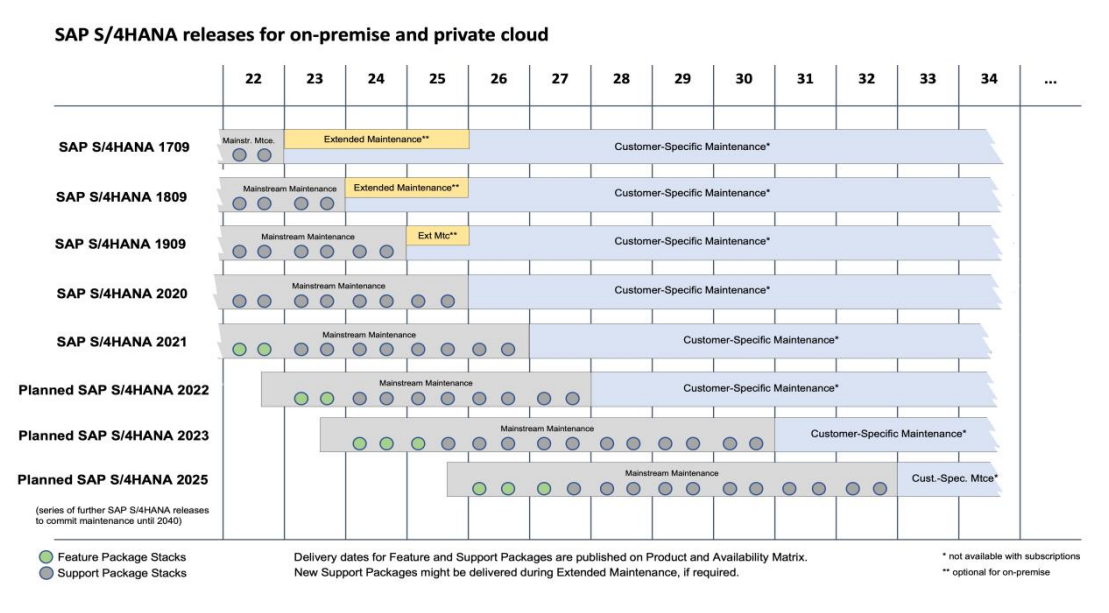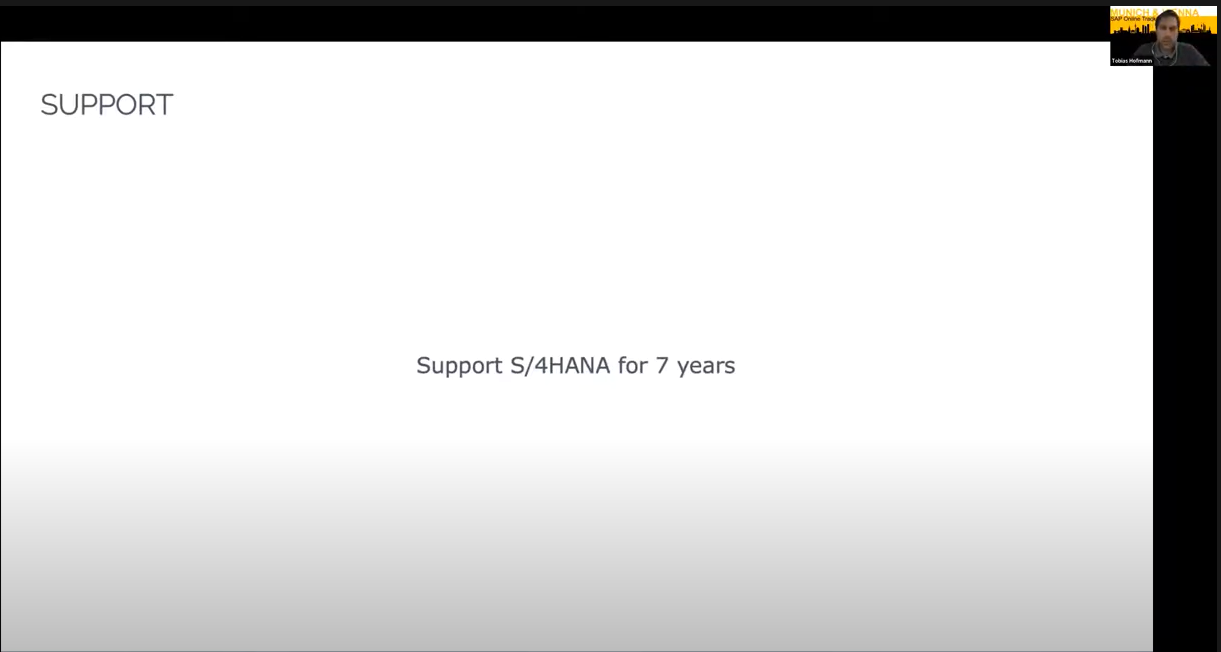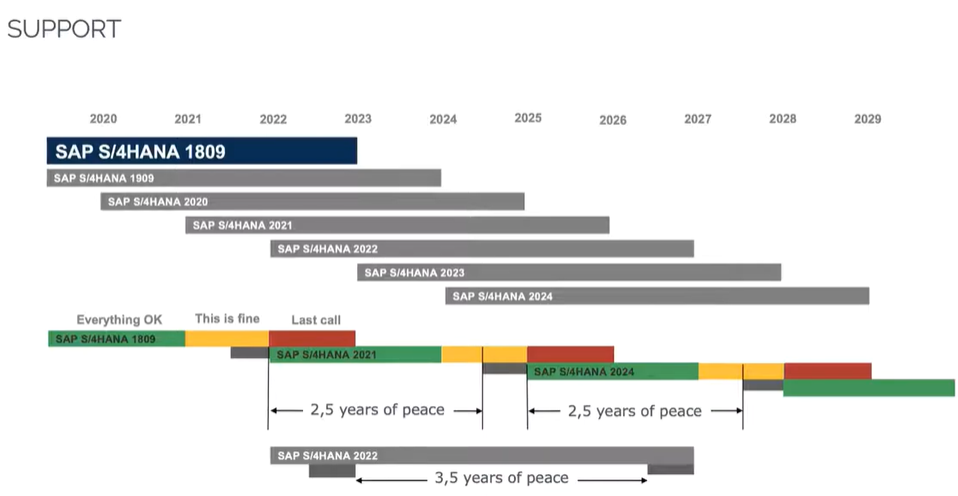S4/HANA goes from 5 to 7
SAP announced that the release cycles for S/4HANA are changing. This announcement comes with two drastic changes that will impact how customers gain benefit out of their S/4HANA installation. The first change regards the release cycle. Instead of releasing every year a new version, we will now have a new version only every two years. One reason for the yearly approach was to continuously bring new features to S/4HANA that were available out of the box. The release cycle change might now look like SAP is going to deliver less features to their paying customers. That of course would mean that SAP delivered new features only with a new S/4HANA release. That ignores the feature packs that brought innovations to each active release. Those innovations made it then to the next S/4HANA release, making it easier for customers to benefit from innovations even when they only adopted the latest S/4HANA release, and skipped the FPS. With the now offered bi-annual release, SAP strips away that benefit. To compensate for this loss, the new S/4HANA releases will receive more feature packs.
Customers that only installed a new release: that’s less work to do, yet less features if the FPS are skipped. This means that they should consider installing FPS and not wait for a new S/4HANA release. And hope that SAP will offer as many FPS as promised. Once SAP promised to deliver 3 FPS per year, for S/4HANA 2021 it is down to 2 FPS per year. Or as the documentation states: “SAP provides new product versions every year with two Feature Packages” [page 13]
The second big change regarding S/4HANA is the maintenance time. From the news in the announcement:
- “The product will move to a two-year release cycle starting with SAP S/4HANA 2023.”
- “Beginning with SAP S/4HANA 2023, each release will stay in mainstream maintenance for seven years per release, up from five years in previous releases.”
Support changes from 5 years to 7 years. This is the more important part of the announcement. And it is some very good news for SAP customers. This changes drastically how S/4HANA is going to be implemented and used by customers. The graph shows that the time a customers can use the installed S/4HANA release until the next upgrade is needed is increased.

“Starting with SAP S/4HANA 2023 new product versions are planned for every second year with three (3) Feature Packages and a prolongation of mainstream maintenance to seven (7) years.” [page 13, 14]
This gained time is called by SAP as followed: ”Early adopters of SAP’s new releases will have a longer productive use time frame of the product, increasing their return on investment.” [link]
At SITMUC 2020 I gave a presentation about exactly the problems a customer runs into due to SAP’s release strategy of just 5 years. At minute 11:30 I ask that SAP should increase support for S/4HANA to 7 years.

As SAP forced their customers to update, the time between finishing a roll-out of a new S/4HANA release and having to start the process to upgrade to the next release is short. In my talk I showed that the time a customer has to focus on innovation is something between 2 ½ and 3 ½ years (at 12:45). And this is already an optimistic estimate.

Adding to this that resources are in short demand ( not only at customers), and that SAP projects can be very resource and time consuming, the 5 years maintenance adds unnecessary pressure on SAP teams at customers. In such an environment, you hardly innovate, you mostly operate. That’s even worse as this situation should be known to SAP and the pressure created by the 5 years maintenance was artificially created.
Good to see that SAP agrees with me and adopts my idea to support S/4HANA for 7 years. I wonder why it took them 2 years to do this.
0 Comments